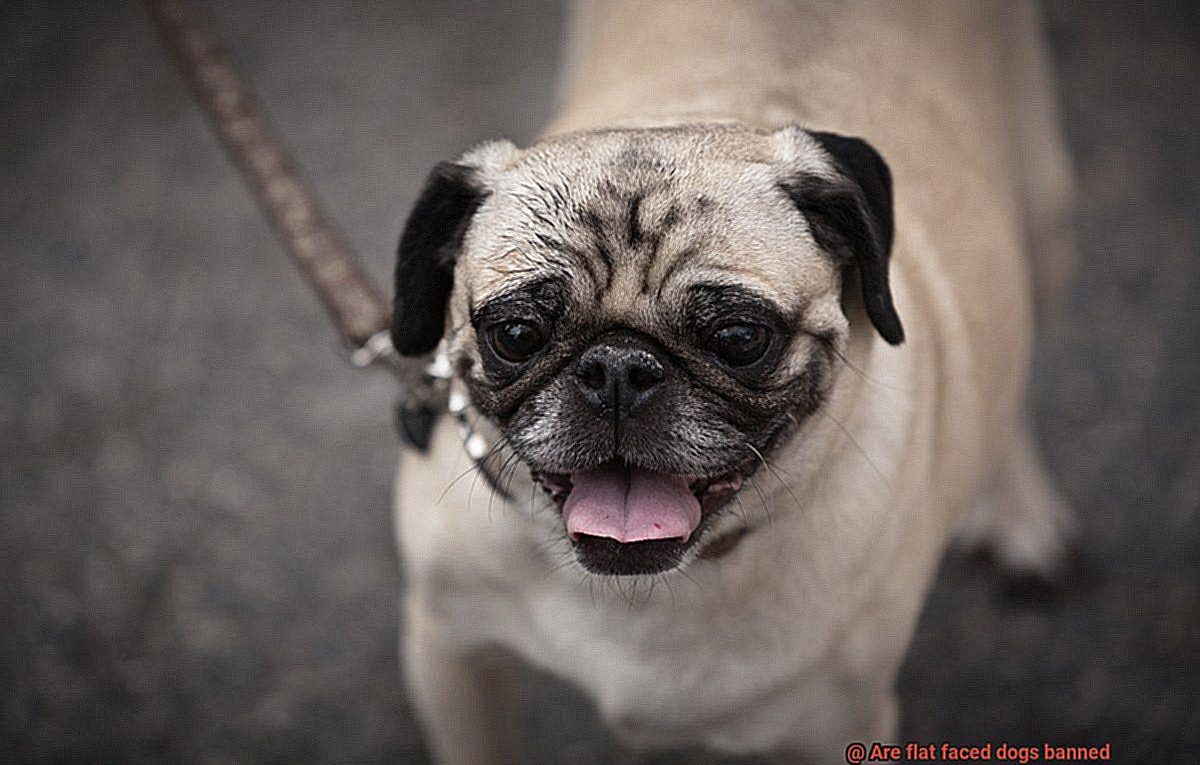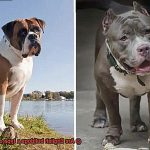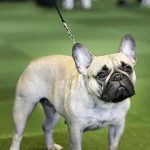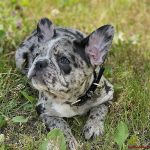Are flat faced dogs banned?
Step right into the world of dog lovers, where one question reigns supreme: Are flat-faced dogs banned? Brace yourself for a rollercoaster of opinions, as we dive headfirst into the controversy surrounding these adorable breeds. Picture those squishy faces and wrinkled noses that have stolen hearts worldwide. But with concerns about their health and well-being, is it time to say goodbye to these lovable companions?
Let’s start with the supporters, who argue that flat-faced dogs are simply irresistible. Their charm knows no bounds, with personalities as captivating as their unique features. From English Bulldogs to Pugs and French Bulldogs, these breeds have carved a special place in our hearts. Advocates claim that banning them based solely on appearance would be unjust, robbing countless people of the joy and companionship they bring.
But hold your horses. Critics have a bone to pick with these breeds. They argue that breeding practices aimed at achieving those adorable flattened faces have led to serious health problems. Think respiratory issues, difficulty regulating body temperature, and a higher risk of various ailments. Detractors believe that putting aesthetics before well-being is downright unacceptable. They propose banning these breeds to encourage healthier alternatives.
As this debate rages on, it’s crucial to approach it with an open mind. We need to consider both sides – the adoring fans and the concerned critics – if we want a fair resolution. Finding a balance between preserving what makes flat-faced dogs so special while ensuring their health and happiness is no easy task for breeders, organizations, and policymakers alike.
In this blog series, we’ll dig deep into the specific health challenges faced by flat-faced breeds. We’ll explore efforts made to address these concerns and examine potential alternatives to an outright ban. By delving into all aspects of this contentious issue, we can foster a more informed discussion about the future of flat-faced dogs and how to responsibly care for them.
Join us as we navigate this controversy, shedding light on both the risks and rewards associated with these beloved breeds. It’s time to unravel the complexities and discover what lies ahead for our squishy-faced friends.
What is Brachycephalic Obstructive Airway Syndrome (BOAS)?
Contents
- 1 What is Brachycephalic Obstructive Airway Syndrome (BOAS)?
- 2 Common Health Issues in Flat-Faced Breeds
- 3 Regulations and Restrictions on Breeding and Owning Flat-Faced Dogs
- 4 The Netherlands Banning the Breeding of Brachycephalic Dogs
- 5 The Kennel Club Revising Breed Standards for Certain Flat-Faced Breeds
- 6 Airlines and Transportation Companies Restricting the Transport of Flat-Faced Dogs
- 7 Pros and Cons of Owning a Flat-Faced Dog
- 8 Conclusion
Today, we’re diving into the fascinating world of Brachycephalic Obstructive Airway Syndrome (BOAS) and its impact on our beloved flat-faced friends. As a proud Frenchie owner myself, I understand the importance of keeping our furry companions healthy and happy. So, let’s explore what BOAS is all about and how we can ensure our Frenchies live their best lives.
What is BOAS?
Brachycephalic Obstructive Airway Syndrome (BOAS) is a condition that affects brachycephalic or flat-faced dogs like French Bulldogs, Pugs, and Bulldogs. It refers to a combination of anatomical abnormalities in the upper airway that can cause breathing difficulties and other health issues in these breeds.
Understanding the Anatomy:
To comprehend BOAS, we must first understand the unique anatomy of our Frenchies. Their adorable flat faces are a result of a shortened skull shape. While this gives them their distinctive appearance, it also leads to structural abnormalities in their respiratory system. These include narrowed nostrils, an elongated soft palate, a collapsed larynx, and a narrowed trachea. These abnormalities hinder the normal flow of air through the nose and throat, making it difficult for our Frenchies to breathe comfortably.
Recognizing the Symptoms:

As responsible pet parents, it’s crucial to be familiar with the signs of BOAS. Keep an eye out for noisy or labored breathing, snorting or snoring sounds, difficulty exercising or becoming easily exhausted, gagging or retching, and even fainting. In severe cases, your Frenchie may experience respiratory distress or collapse.
Taking Action:
Early intervention is key in managing BOAS and improving your Frenchie’s quality of life. Here are a few steps you can take:
- Lifestyle Modifications: Help your Frenchie by managing their weight and avoiding strenuous exercise. Regular walks and playtime are important, but be mindful of their limitations.
- Collar vs. Harness: Opt for a harness instead of a collar to reduce pressure on your Frenchie’s neck and airways. This small change can make a big difference.
- Surgical Interventions: In more severe cases of BOAS, surgical procedures may be necessary. These can include widening narrowed nostrils, shortening an elongated soft palate, and correcting other anatomical abnormalities. Consult with your veterinarian to determine the best course of action for your furry friend.
Common Health Issues in Flat-Faced Breeds
Flat-faced breeds, also known as brachycephalic breeds, have become increasingly popular in recent years due to their unique appearance. However, these breeds are prone to several common health issues that owners should be aware of. Let’s take a closer look at these health issues and what can be done to address them.
Brachycephalic Obstructive Airway Syndrome (BOAS)
Brachycephalic obstructive airway syndrome (BOAS) is one of the most common health issues in flat-faced breeds. This condition occurs due to the shortened skull shape and includes a combination of respiratory problems such as narrowed nostrils, elongated soft palate, and a narrow windpipe. These anatomical abnormalities can result in difficulty breathing, especially during exercise or in hot weather.
To help manage BOAS, it’s important to avoid excessive exercise in hot weather and provide adequate rest and shade for your dog. In severe cases, surgical intervention may be necessary to alleviate breathing difficulties.
Heat Intolerance
Due to their compromised respiratory system, flat-faced breeds are more prone to heat intolerance. They have a harder time regulating their body temperature and are more susceptible to heatstroke. It’s crucial to keep these dogs in cool environments, especially during hot summer months. Provide plenty of fresh water and avoid exercising them during peak temperatures.
Dental Problems
Dental problems are prevalent in flat-faced breeds due to their shortened snout. This can lead to overcrowded or misaligned teeth, making it difficult for proper dental care. Regular dental cleanings and check-ups are essential to prevent dental disease.
Eye Problems
Flat-faced breeds have prominent eyes that are more exposed and susceptible to injuries, infections, and conditions such as dry eye or cherry eye. Regular eye examinations by a veterinarian are crucial to catch any issues early on.
Skin Fold Dermatitis
Skin fold dermatitis is a common skin problem in flat-faced breeds. The excessive skin folds around the face and body can trap moisture and debris, leading to bacterial or fungal infections. Owners should regularly clean and dry these areas to prevent skin irritation.
Reproductive Issues
Flat-faced breeds often experience reproductive issues due to the unique anatomy of their reproductive organs. Difficulties during mating and birthing are common, and cesarean sections are often performed to ensure the safety of both the mother and puppies.
Regulations and Restrictions on Breeding and Owning Flat-Faced Dogs
Today, let’s dive into the world of regulations and restrictions surrounding the breeding and ownership of flat-faced dogs, like French bulldogs. These adorable pups have stolen our hearts with their squished faces and playful personalities, but it’s important to understand the regulations in place to protect their health and well-being.
Regulations can vary from country to country, and even within different regions or states. Let’s take a closer look at some examples of countries that have implemented specific laws or guidelines for flat-faced dog breeds.
In the United Kingdom, the Kennel Club has introduced breed standards to address health concerns in brachycephalic breeds. They’ve set out guidelines to discourage exaggerated features that can lead to health problems. Australia has also taken steps to tackle these issues, with the Australian National Kennel Council implementing mandatory health tests for breeding dogs. And in the Netherlands, they’ve gone a step further by banning certain brachycephalic breeds altogether.
So why all the fuss? Well, these regulations are primarily driven by concerns for the health and welfare of these dogs. Flat-faced breeds are prone to a range of health issues due to their unique anatomy. Breathing difficulties, eye problems, and dental issues are just a few examples. These health problems are often a result of selective breeding for certain physical traits, which has led to exaggerated features in these breeds.
Veterinary professionals and animal welfare organizations have raised ethical concerns about breeding dogs with such health risks. It’s crucial for us as responsible dog owners to understand these issues and take appropriate measures.
Some specific regulations that have been put in place include breeding restrictions or bans on certain dog breeds or types. For example, some countries have limitations on breeding practices, such as restrictions on mating two brachycephalic dogs together. Others require mandatory health tests for breeding dogs to ensure they are free from certain hereditary conditions.
In addition to breeding regulations, some countries have introduced legislation requiring owners of flat-faced dogs to provide special care for their pets. This can include regular veterinary check-ups, restricted exercise to prevent overheating, and even limitations on importing certain breeds.
While these regulations are important for the well-being of flat-faced dogs, it’s also essential for potential owners to educate themselves about the breed’s specific needs. These adorable pups require special care and attention, and responsible ownership is key to improving their overall health and happiness.
The Netherlands Banning the Breeding of Brachycephalic Dogs
Brace yourselves because it’s about your beloved flat-faced pups. The Dutch government has recently implemented a ban on breeding brachycephalic dogs. Wondering why? Well, let’s dive right into it.

What are Brachycephalic Dogs?
Brachycephalic dogs are those adorable pooches with flat faces and short muzzles, like French bulldogs, pugs, and Bulldogs. While they may look cute, these breeds often suffer from serious health issues due to their unique facial structure.
The Dutch Ban on Breeding:
The Netherlands has taken a significant step towards protecting the welfare of these dogs by banning their breeding. The government aims to prevent further production of brachycephalic dogs to reduce the number of animals suffering from the consequences of selective breeding.
Why the Ban?
The breeding practices for brachycephalic dogs have prioritized physical appearance over their well-being, resulting in a high prevalence of health problems. These include breathing difficulties, eye disorders, and spinal abnormalities. The Dutch government recognizes the ethical implications of such practices and wants to promote healthier breeding practices.
What Does the Ban Include?
The ban prohibits the breeding of dogs with extreme phenotypes, such as those with excessively short muzzles and severe respiratory issues. However, it does not prevent ownership or importation of brachycephalic dogs for personal companionship; it only restricts their breeding within the country.
Support from Stakeholders:
Animal welfare organizations, veterinarians, and concerned dog enthusiasts have shown support for this ban. They advocate for the well-being of these breeds and believe that responsible ownership and adoption from shelters are better alternatives than perpetuating unhealthy breeding practices.
Critics’ Concerns:
Some critics argue that a complete ban may lead to an increase in illegal breeding and smuggling of brachycephalic dogs into the country. This highlights the need for effective enforcement measures to ensure compliance with the ban.
Conclusion:
The Netherlands has taken a bold step towards improving the welfare of brachycephalic dogs by banning their breeding. This decision aligns with the growing concern among animal welfare organizations and veterinary professionals about the ethical implications of selective breeding. While this ban may face some challenges, it represents an important milestone in promoting healthier breeding practices and ensuring a better quality of life for these beloved breeds.
Remember, if you’re considering adding a furry friend to your family, adopting from a shelter can be a rewarding choice. Let’s all join hands (and paws) in advocating for the well-being of our four-legged companions.
The Kennel Club Revising Breed Standards for Certain Flat-Faced Breeds
We’ve got some exciting news to share with you about The Kennel Club revising breed standards for certain flat-faced breeds. As a dog lover and expert in this field, I’m here to give you the lowdown on why this decision was made and what it means for our beloved flat-faced companions.
Why the revision?
- Health concerns: Over the years, there has been a growing realization that breeds like French Bulldogs, Pugs, and Bulldogs face significant health challenges due to their brachycephalic features. These include breathing difficulties, eye problems, and dental issues.
- Welfare first: The Kennel Club aims to prioritize the health and well-being of these breeds over their appearance. By revising the breed standards, they hope to encourage responsible breeding practices that promote healthier features, such as longer muzzles and improved breathing ability.

What does this mean for flat-faced breeds?
- Changes in appearance: The revised breed standards may mean that dogs with extreme flat faces may no longer meet the criteria. This doesn’t imply a ban on flat-faced dogs but emphasizes healthier individuals within these breeds.
- Eligibility for registration and shows: Dogs not meeting the new breed standards may not be eligible for registration or show purposes. However, existing flat-faced dogs can still be registered and participate in various activities like obedience trials and agility competitions.
Reactions and implications:
- Mixed reactions: The Kennel Club’s decision has sparked mixed opinions among dog owners and breeders. Some see it as a positive step towards improving breed health, while others worry about potential unfairness towards responsible breeders who have already been working on improving their dogs’ health.
- Broader movement: The revision of breed standards aligns with a broader effort within the dog breeding community to address health concerns in brachycephalic breeds. Other organizations and veterinary associations are also actively promoting responsible breeding and educating owners about potential health issues.
Airlines and Transportation Companies Restricting the Transport of Flat-Faced Dogs
If you are a proud owner of a French Bulldog or any other flat-faced breed, it is essential to be aware of the restrictions that many airlines and transportation companies have put in place regarding the transport of these adorable pups. While it may seem like an inconvenience, these restrictions are in place to prioritize the health and well-being of our furry friends during travel.
The main reason behind these restrictions is the increased risk of respiratory problems and heat stroke that flat-faced dogs face. Breeds such as French Bulldogs, English Bulldogs, Pugs, and Boston Terriers are known for their brachycephalic (flat-faced) features. Their short noses and narrow airways make it difficult for them to regulate their body temperature and breathe properly, especially in stressful situations like air travel.
Several incidents of flat-faced dogs suffering from respiratory distress and even dying during flights have prompted airlines and transportation companies to take action. To ensure the safety of these vulnerable breeds, many airlines now require owners to provide a veterinary certificate confirming that the dog is fit for air travel before they can board the plane. Some airlines have gone a step further by completely banning the transport of flat-faced dogs, while others have imposed additional restrictions such as limiting the number of these breeds allowed on a single flight.
Transportation companies offering ground transportation services have also followed suit by implementing similar restrictions on the transport of flat-faced dogs. These measures aim to reduce the risk of adverse health events and prioritize the well-being of our beloved companions.
To avoid any last-minute complications or disappointments, it is crucial for owners of flat-faced dogs to plan their travel accordingly. This means checking with airlines or transportation companies well in advance to understand their specific restrictions and requirements. Ensuring that your furry friend has a comfortable and safe journey should always be a top priority.
While these restrictions may seem inconvenient at times, it is important to remember that they are in place to protect the health and well-being of our flat-faced companions. By being aware of these restrictions and planning accordingly, we can ensure that our furry friends have a stress-free and safe travel experience.
Pros and Cons of Owning a Flat-Faced Dog
Bonjour, fellow French Bulldog aficionados. If you’ve been charmed by those adorable smushed faces and wrinkled skin, you’re not alone. French Bulldogs, along with other flat-faced breeds, have become incredibly popular in recent years. But before you bring home that Frenchie pup, it’s important to consider the pros and cons of owning a flat-faced dog. In this guide, we’ll explore the advantages and challenges that come with these lovable companions.
Pros of Owning a Flat-Faced Dog:
Adorable Appearance:
Let’s face it (pun intended), one of the biggest draws of flat-faced breeds is their irresistible cuteness. Those big eyes and squishy faces are simply too precious to resist.
Low Exercise Requirements:
If you’re not the most active person or have a busy schedule, flat-faced dogs are perfect for you. They have lower exercise needs compared to other breeds, meaning a short walk or playtime in the yard will keep them content.
Affectionate Nature:
French Bulldogs are renowned for their affectionate and loving personalities. They’ll quickly become your shadow, always craving your attention and cuddles. Talk about a loyal companion.
Good with Children:
Flat-faced dogs, including Frenchies, make fantastic family pets. Their patient nature and gentle disposition make them well-suited for households with children. They can handle rough play and will happily join in on family adventures.
Cons of Owning a Flat-Faced Dog:
Health Issues:
The unique anatomy of flat-faced breeds can lead to various health problems. Brachycephalic airway syndrome is a common concern, causing breathing difficulties, snoring, and intolerance to heat. Eye problems, dental issues, skin infections, and joint problems can also occur.
Difficulty Regulating Body Temperature:
Due to their short muzzles and compromised airways, flat-faced dogs struggle to regulate their body temperature efficiently. They are prone to overheating, especially in hot weather or during vigorous activities. Keeping them cool and preventing heatstroke is of utmost importance.
Limited Exercise Tolerance:
Flat-faced breeds may tire quickly due to their compromised respiratory system. Engaging in intense physical activities can be challenging for them. To ensure their well-being, it’s crucial to respect their exercise limitations and avoid pushing them too hard.
Grooming Needs:
Certain flat-faced breeds, like Bulldogs, require regular grooming to maintain clean skin folds and prevent infections. Cleaning and drying those adorable wrinkles are essential to avoid the buildup of bacteria or yeast. Dental hygiene is also crucial for these breeds, as they are prone to dental issues.
YyfJ6mS4aNg” >
Conclusion
In conclusion, it is important to note that while there are no outright bans on flat-faced dogs, there are certain restrictions and regulations in place to protect their health and well-being.
Breeders, owners, and prospective dog parents should be aware of the potential health issues associated with these breeds and take appropriate measures to ensure their welfare. It is crucial to prioritize the long-term health of these dogs over aesthetic preferences or popularity.
By being informed and proactive, we can create a safer and healthier environment for these beloved pets.




